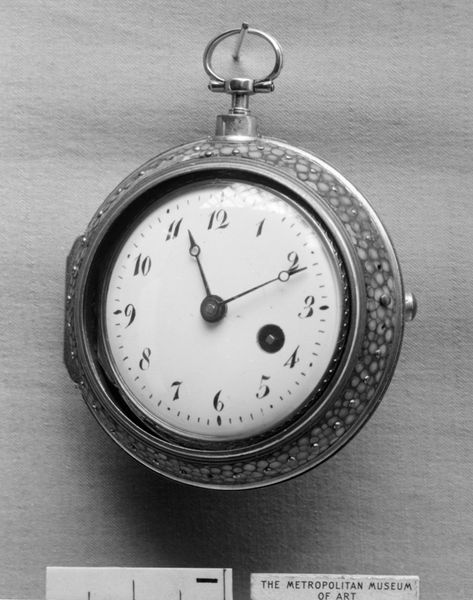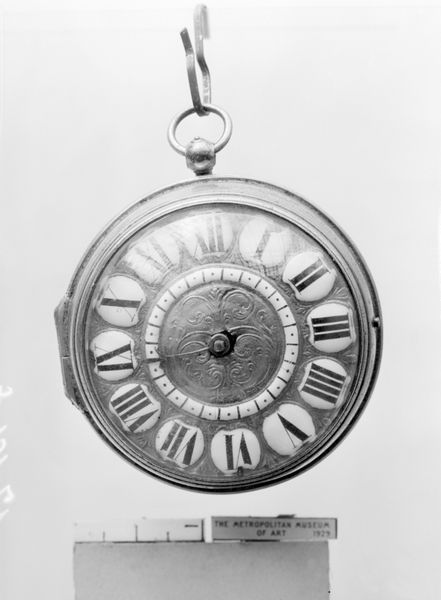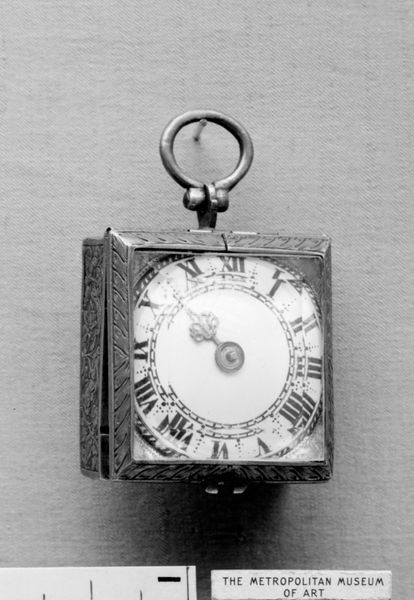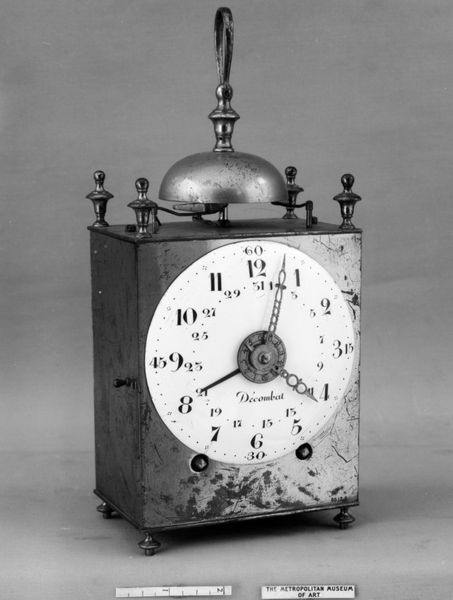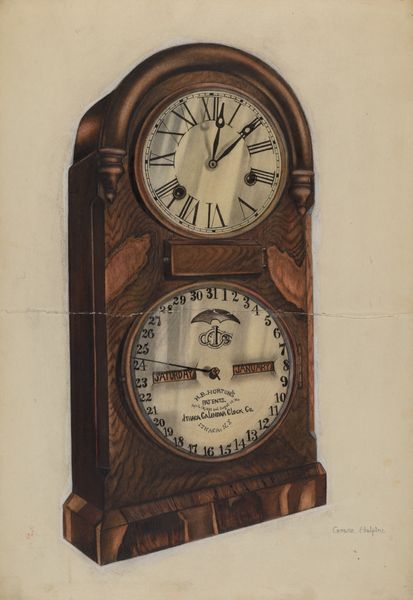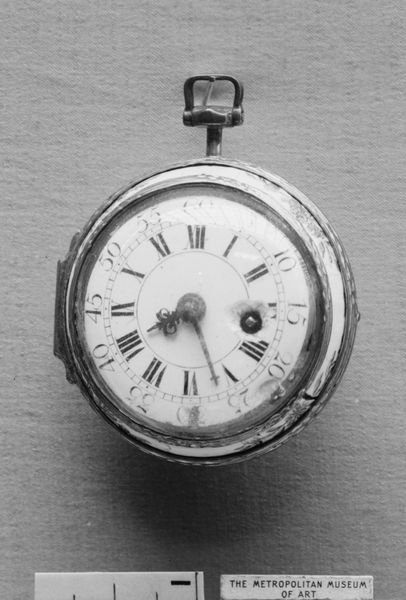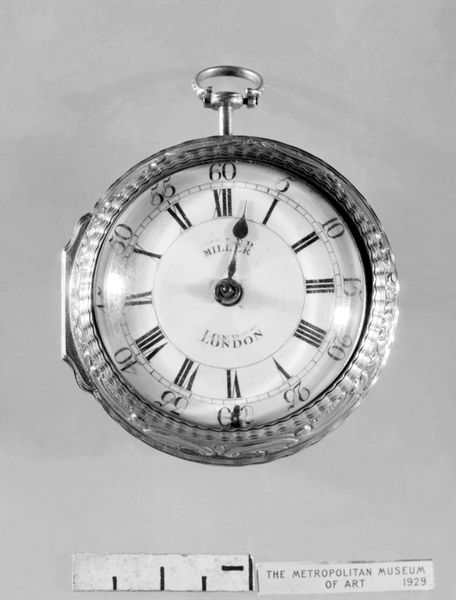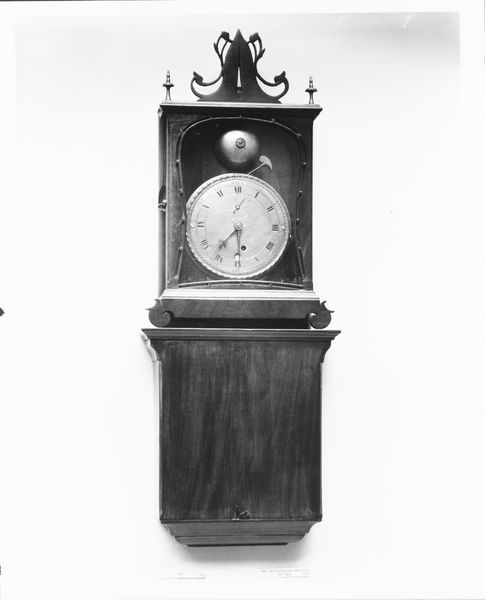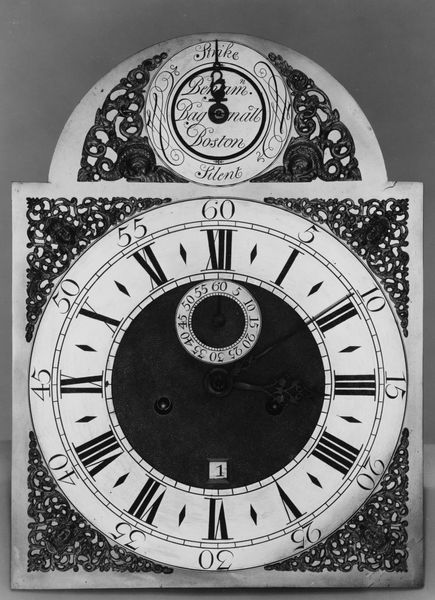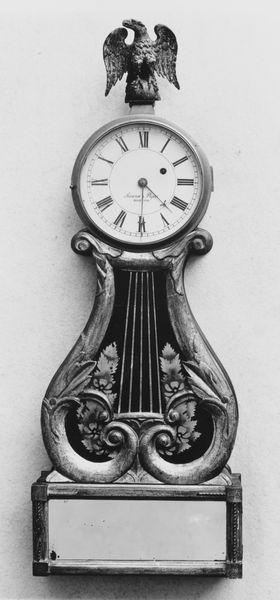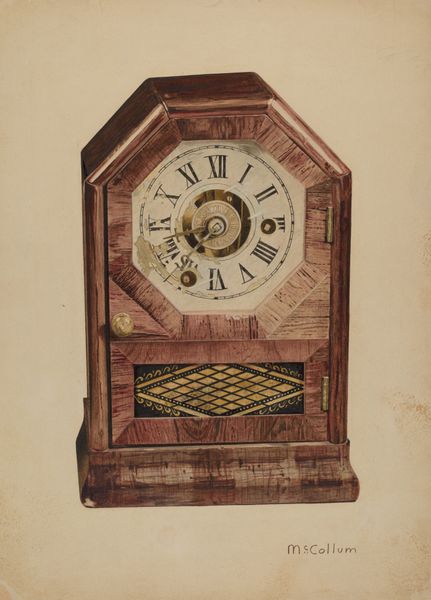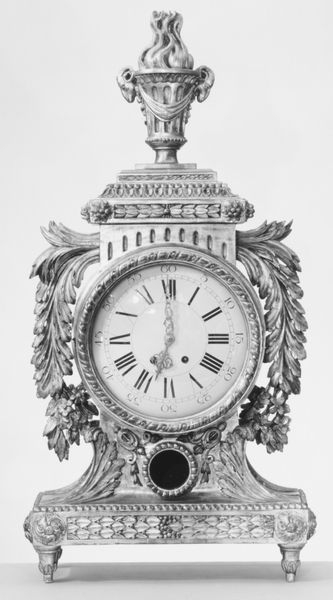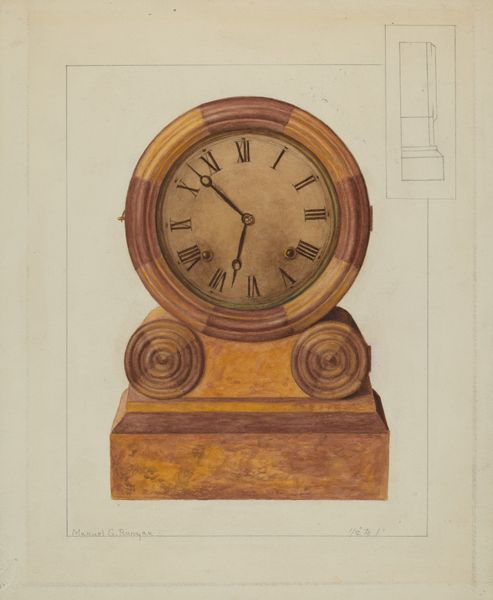
drawing, print, metal, bronze, engraving
#
drawing
# print
#
metal
#
sculpture
#
bronze
#
geometric
#
academic-art
#
engraving
Dimensions: 9 3/8 x 9 3/8 in. (23.8 x 23.8 cm)
Copyright: Public Domain
Curator: Standing before us is an artifact, a sundial, meticulously crafted by Goldsmith Chandlee between 1797 and 1800. It's a rather handsome blend of bronze, metal, and, if you look closely, a series of delicate engravings. Editor: Immediately, I'm struck by the austere, almost severe geometric design. The stark lines, the aged metal… it evokes a sense of the relentless passage of time, a tangible connection to our mortality, which has a profound impact. Curator: Precisely. The sundial wasn't merely a functional instrument; it also served as a symbol. Timekeeping, especially in that era, was intertwined with concepts of order, progress, and the Enlightenment's emphasis on reason. Chandlee's location in Winchester is crucial; we must consider his likely ties to prominent families or institutions that valued scientific pursuits. Editor: Right. It raises interesting questions. For whom was this sundial intended? The latitude marking "38-20" indicates a very specific location. What does that tell us about the owner's world, about access to the scientific advancements of the era, and what position they would have held? We should question how tools of supposed objective knowledge like this were used to legitimize positions of authority in a deeply unequal society. Curator: Absolutely, and we can look at Chandlee himself, a silversmith and clockmaker. Examining his other works might reveal the socioeconomic currents influencing artisans of the period and their connection to institutions of power. Editor: Beyond functionality, I see the potential for deeper symbolic readings, and how instruments are perceived in popular consciousness. The sundial could be read, in contemporary terms, as representative of the climate crisis, a visual emblem of our limited time, of ticking clocks as global temperatures continue to rise. The fact that the face is deteriorating with age perhaps symbolizes how societies have misused or failed to understand tools or time, resulting in destructive policies for profit. Curator: Fascinating. Considering its aesthetic, academic-art qualities, it's a great piece to discuss from many avenues of socio-historical interpretations and applications. I would venture that its current display at The Met creates another new dialogue for contemporary audiences. Editor: Exactly! I leave contemplating the responsibility we share in interpreting such antiquated tools and the values they seem to convey as new evidence arises regarding time, culture, and contemporary ethical conflicts.
Comments
No comments
Be the first to comment and join the conversation on the ultimate creative platform.

